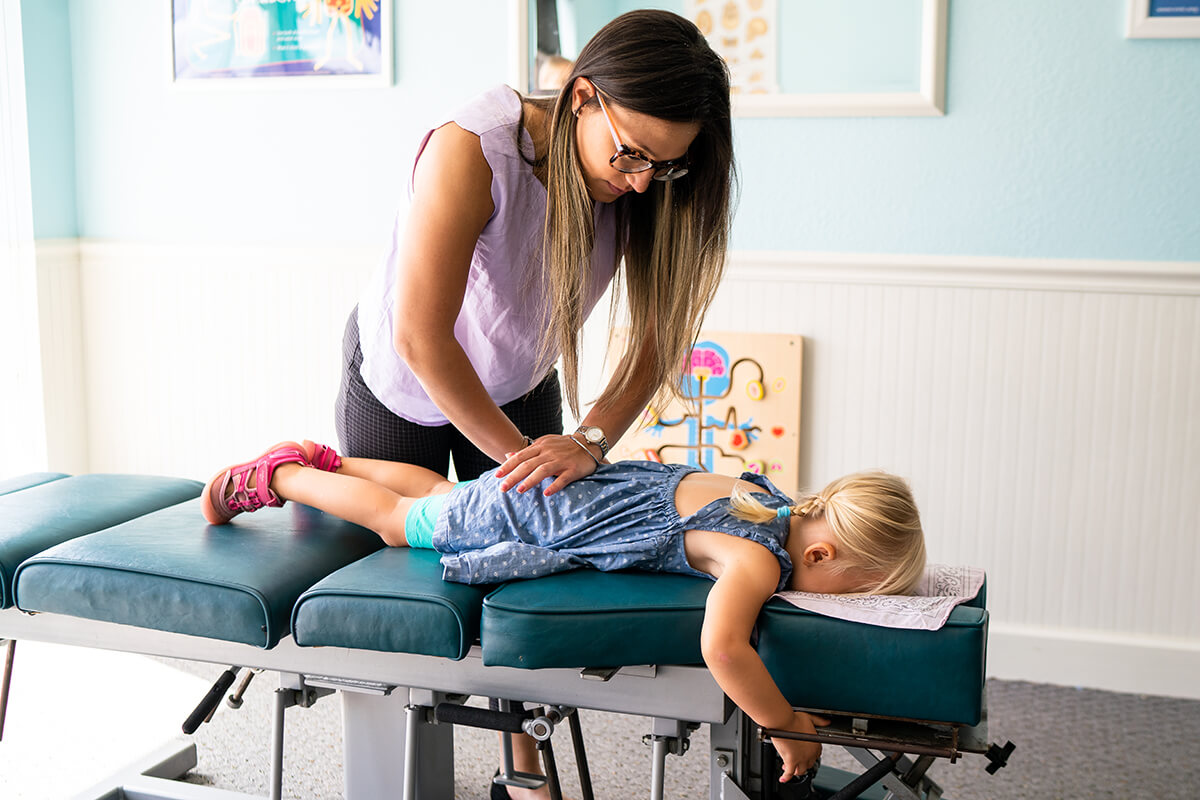More parents are choosing alternative therapies to complement their families’ health strategy, and chiropractic care has been established to be first and foremost on their mind. You’ve probably seen issues of Pathways Magazine in our office, a magazine published by the International Chiropractic Pediatric Association (ICPA). Our office is a proud, supporting member of the ICPA because it stands behind its advanced training with published research (that this office contributes to!).
Chiropractors and Pediatric Patients
In 2010, the ICPA evaluated 548 ICPA chiropractors in the U.S., Canada, and Europe on their pediatric practices. They found that 21% of their patients were children under the age of eighteen. Even considering the increase in likelihood of pediatric care due to participants being ICPA members, this is a stark increase from a previous study that showed pediatrics comprising only 11% patient load in 2000.
When parents bring children to one of our members’ practices, they receive specific chiropractic adjustments tailored to the child’s age and size. While pediatric chiropractic involves the correction of spinal misalignment that may be linked to various health conditions, its primary focus includes wellness visits, with otherwise healthy children coming in for preventative “checkups.” Of course, the scope of chiropractic does not include the treatment of disease, and 80% of responders said that they refer patients to medical practitioners when needed. ICPA chiropractors, hope to help our patients develop healthcare partnerships that involve professionals in all fields. Integrative health care of this sort may significantly improve one’s quality of life.
Ideally, all patients would have this kind of access to multiple healthcare professionals, offering them high quality care in each of their fields of expertise. Unfortunately, the chiropractors that we evaluated reported that only 29% of them had received a referral from a medical physician. One-sided partnerships like this are limited in efficacy, and the disparity may be linked to misinformation or a lack of information about pediatric chiropractic care.
Scope of Pediatric Chiropractic Care
It’s important to acknowledge that chiropractic care is not a new development. In fact, chiropractic is considered to be the oldest “alternative” medicine in North America. Of the health care professionals who have primary contact with patients in the U.S., chiropractors fall third, just after physicians and dentists. Chiropractic has developed over time, and its growing popularity is a testament to its reputation of being a trustworthy and reputable profession.
While the vast majority of adults typically visit their chiropractor to resolve neck or back pain, pediatric visits are not as limited. In our study, care relating to pain fell well below wellness care, digestive health, and ear, nose and throat complaints.
Controversy for Non-Pain Related Visits
When chiropractors are visited, it is stereotypically for their work on painful conditions of the neck and back. With such a high volume of pediatric patients coming in for non-pain related issues, the question of efficacy and necessity arises. Bringing ear aches and digestive wellness or preventive care for infants into the question is often unfamiliar to people outside of our circle. Nonetheless, chiropractic adjustments to resolve spinal misalignments are the focus of the professional. And even when pediatric patients visit for seemingly unrelated issues, chiropractors do not treat these conditions directly, but only address the misalignments, regardless of the issue.
Unfortunately, validation supporting these matters is scarce because performing blind studies proves a difficult task. It’s virtually impossible to “fake” a chiropractic adjustment, the clinical ramifications of performing an adjustment in an incorrect manner (to test the hypothesis that a properly performed adjustment is clinically relevant) is inhumane and would never pass the scrutiny of a research review board.
Despite these challenges, the ICPA does have an excellent body of data to evaluate in their Research Program methods; not to mention countless testimonial accounts spanning the globe of how children’s lives are being dramatically enhanced by what we do. As ICPA Director of Research, Joel Alcantara, D.C., concluded in a commentary on an adverse events report:
Evidence-based practice is dependent not only the existing literature, but also the clinical expertise and patient’s or parents’ wishes. Yes, studies are lacking in making risk assessments on the use of spinal adjustments in the pediatric population. However, we in the chiropractic profession have over 100 years of clinical experience on the chiropractic care of children. I would assert that chiropractors perform adjustment procedures more than any other healthcare profession.
In other words, the proof is in the pudding and ever since the first adjustment in 1895, chiropractors have been serving whole families in their communities with great success!
Why Alternative Therapies are Appealing
The long history of chiropractic may be a contributor to the growing popularity of pediatric care. Individuals are seeking more integrative health and becoming more informed as research and health philosophies become accessible.
When a patient turns to alternative therapies, it is not because they are unhappy with their conventional care providers. On the contrary, they report a preference for alternative medicine because it aligns with their belief system. Patients and parents who become more informed on health and wellness issues tend to have a paradigm shift, congruent with the growing preference for integrative care, and many find that the chiropractic lifestyle aligns with this paradigm.
Because of this philosophy shift, a partnership between allopathic medicine and alternative remedies is more important than ever. The American Academy of Pediatrics has recognized this, establishing the Task Force on Complementary and Alternative Medicine to help educate physicians and their patients. Opening communication between physicians and chiropractors will help to establish the integrative care that patients thrive under, helping them to feel confident making informed choices, knowing that their care providers will partner to provide their children with the highest standard of care.
This article is provided by Pathways to Family Wellness magazine, published by ICPA, Inc. Read more: www.pathwaystofamilywellness.org.






